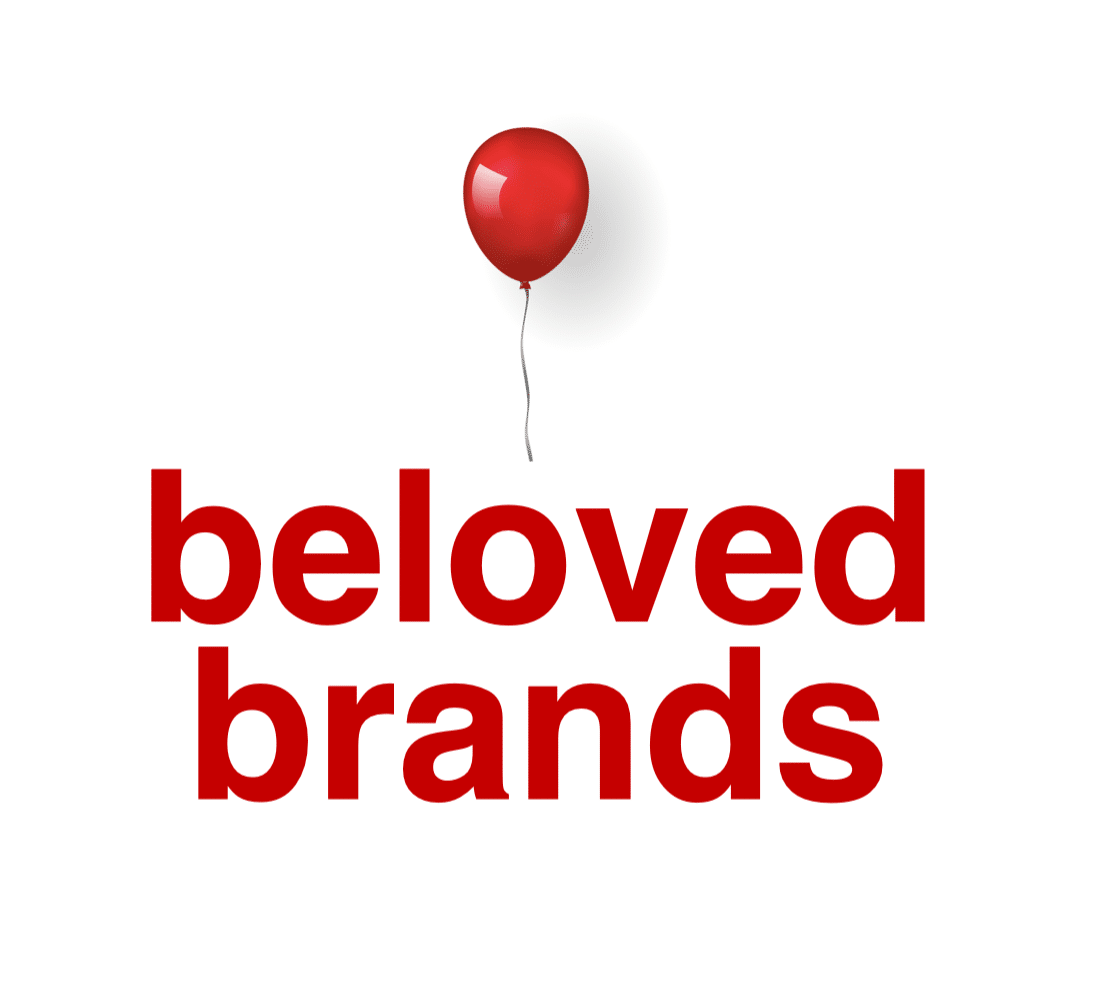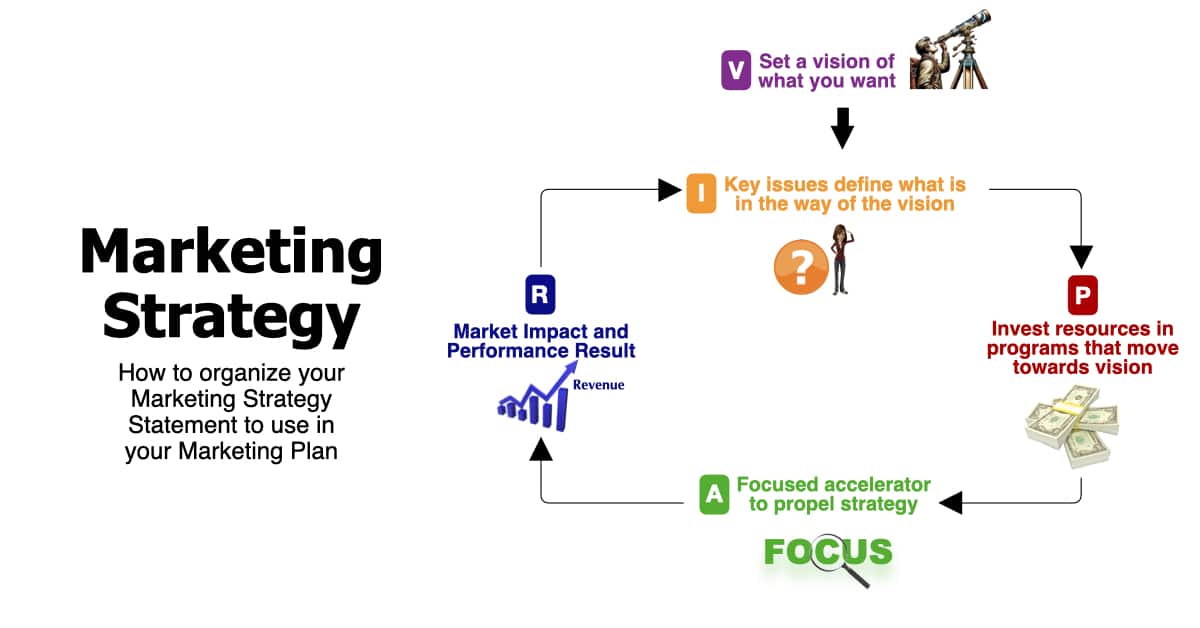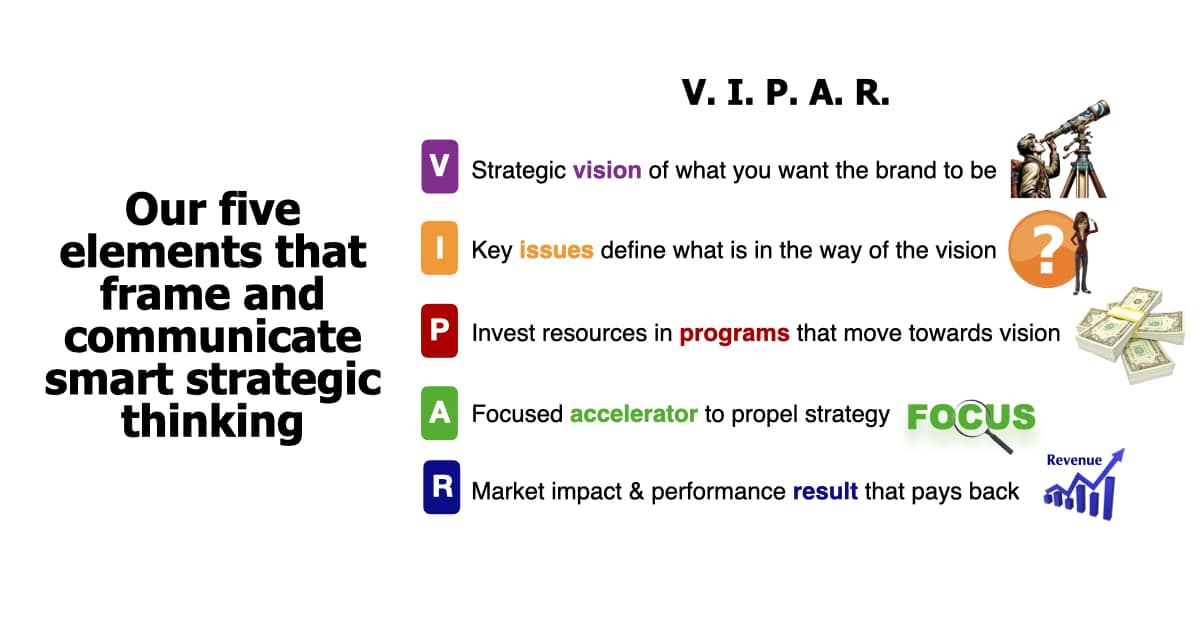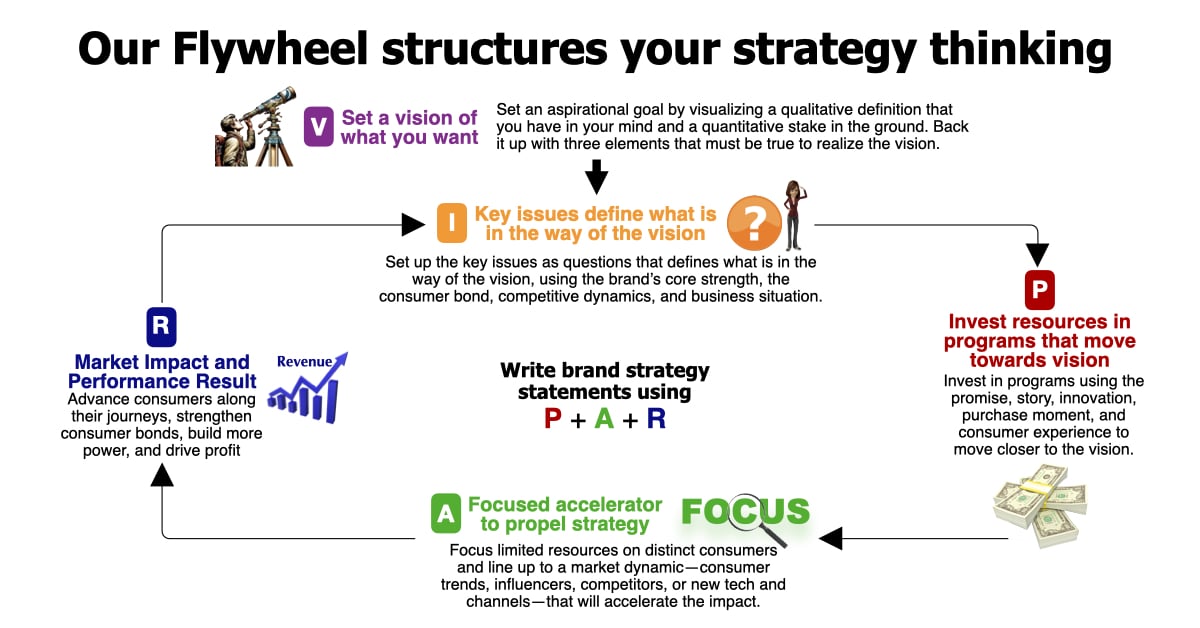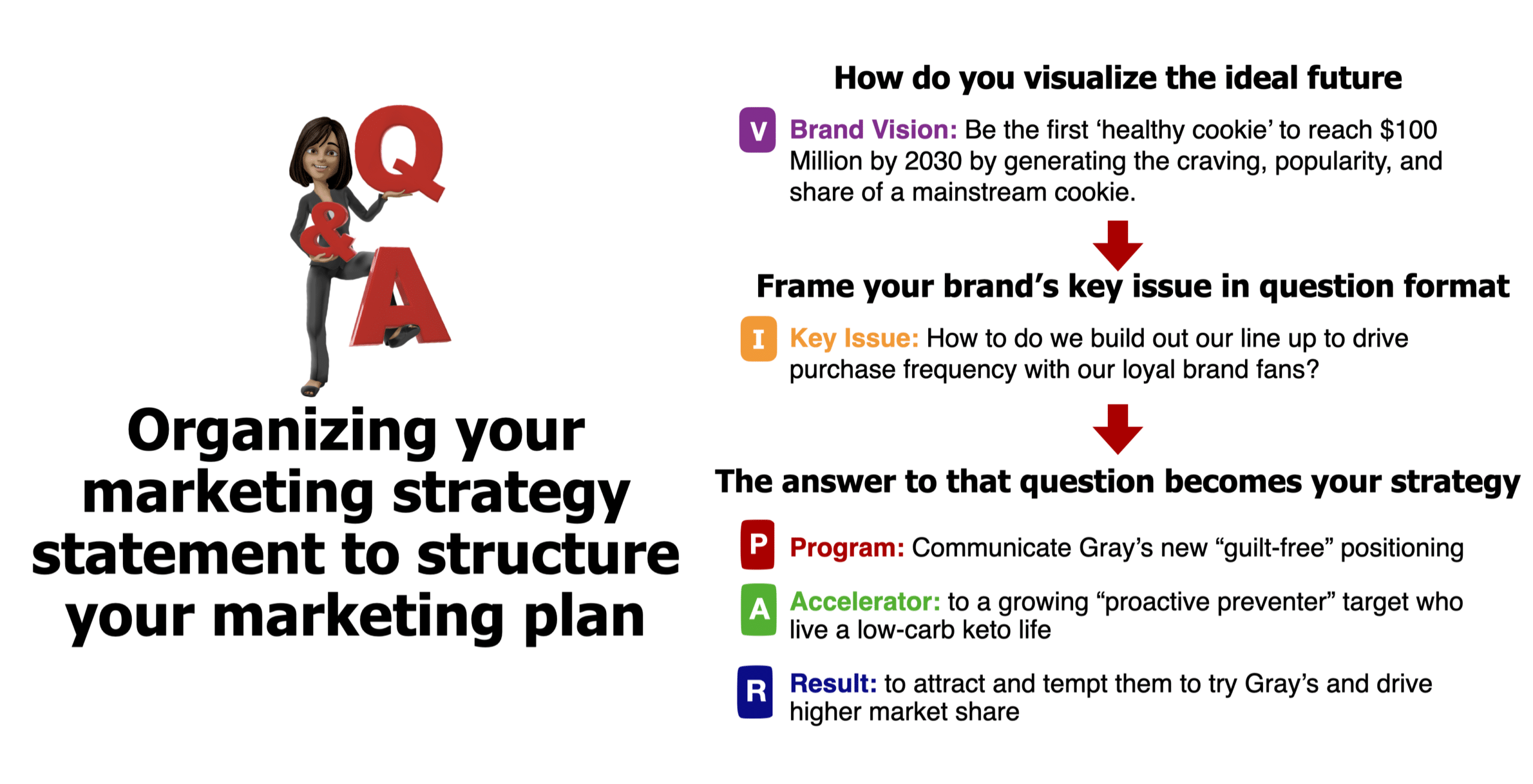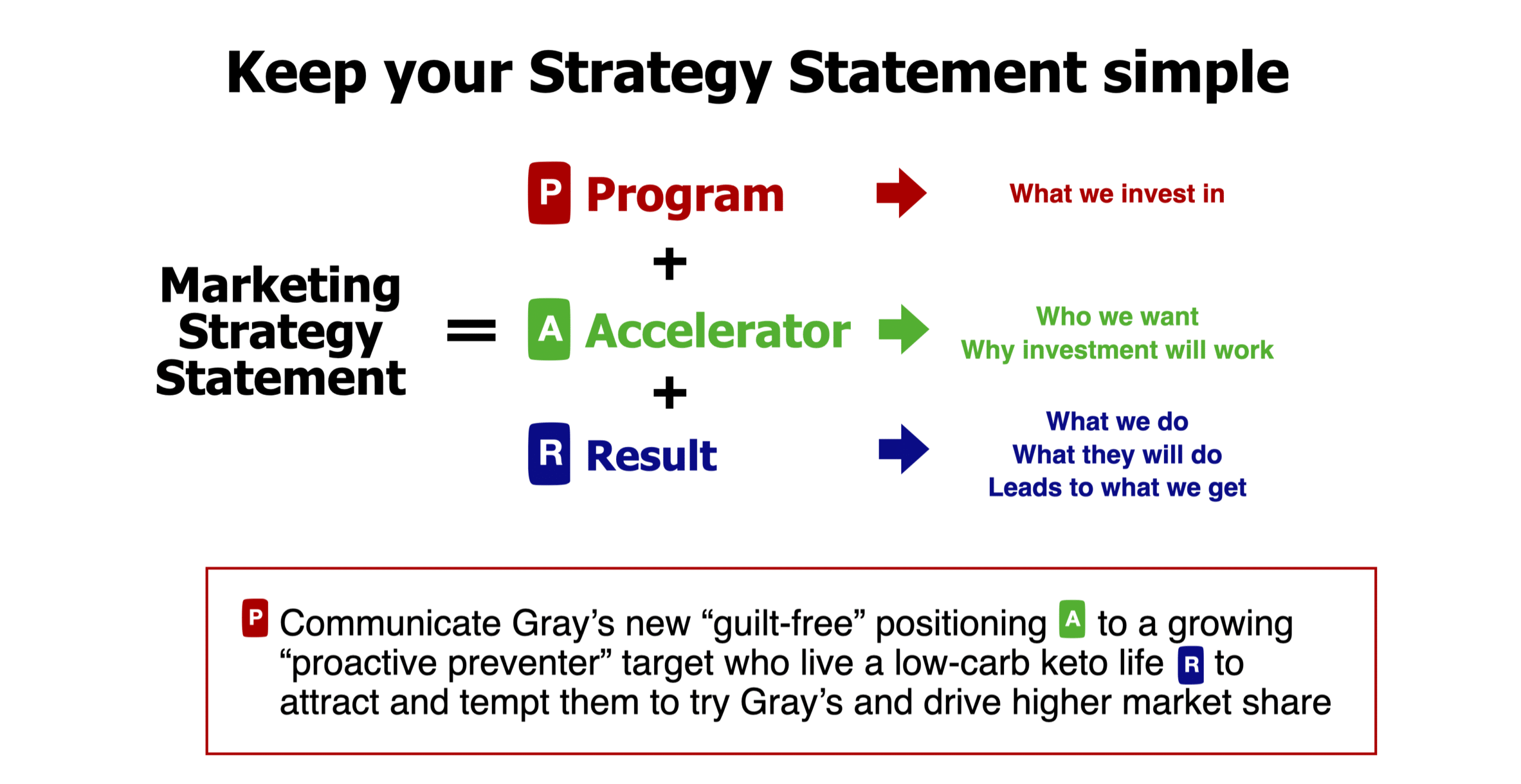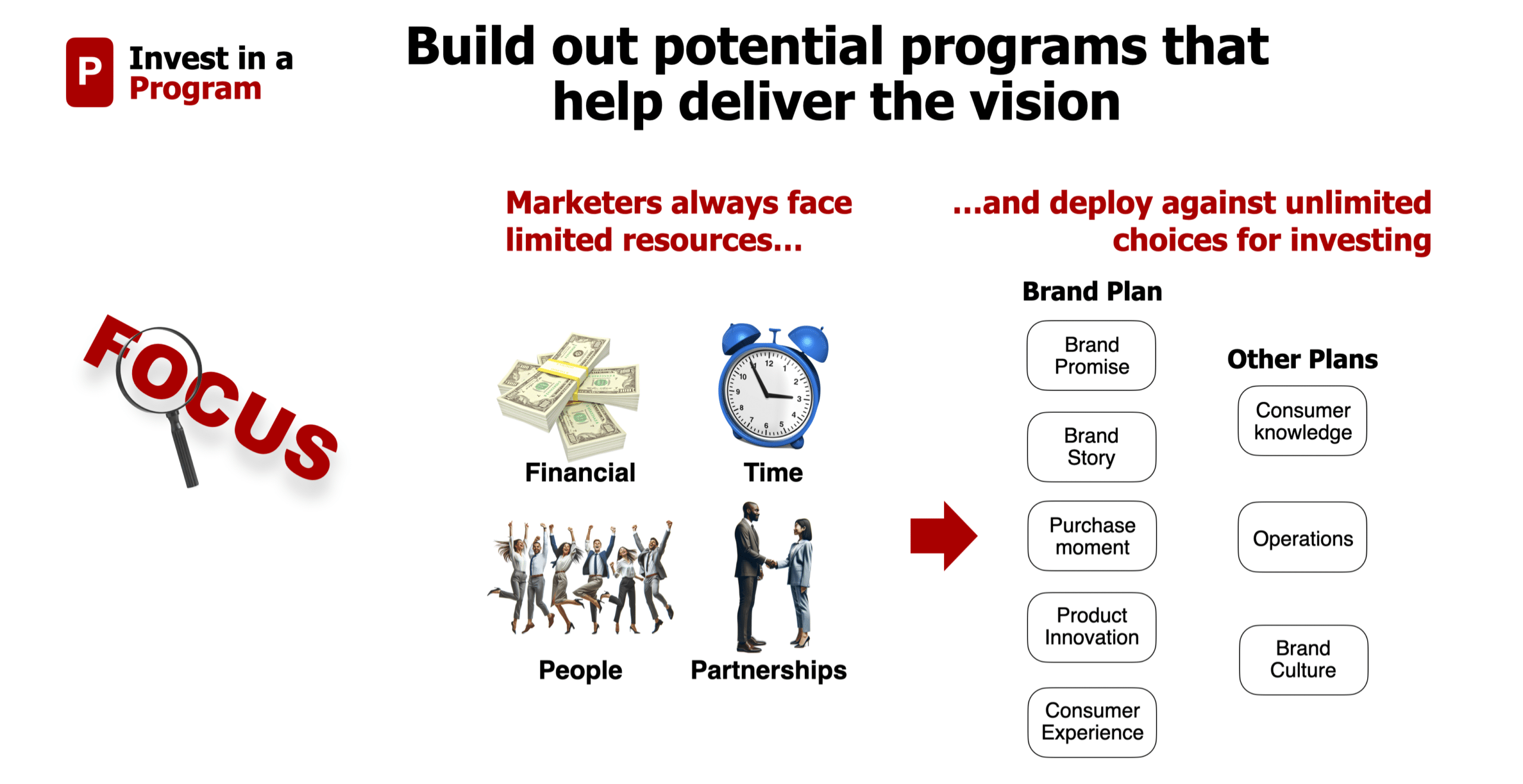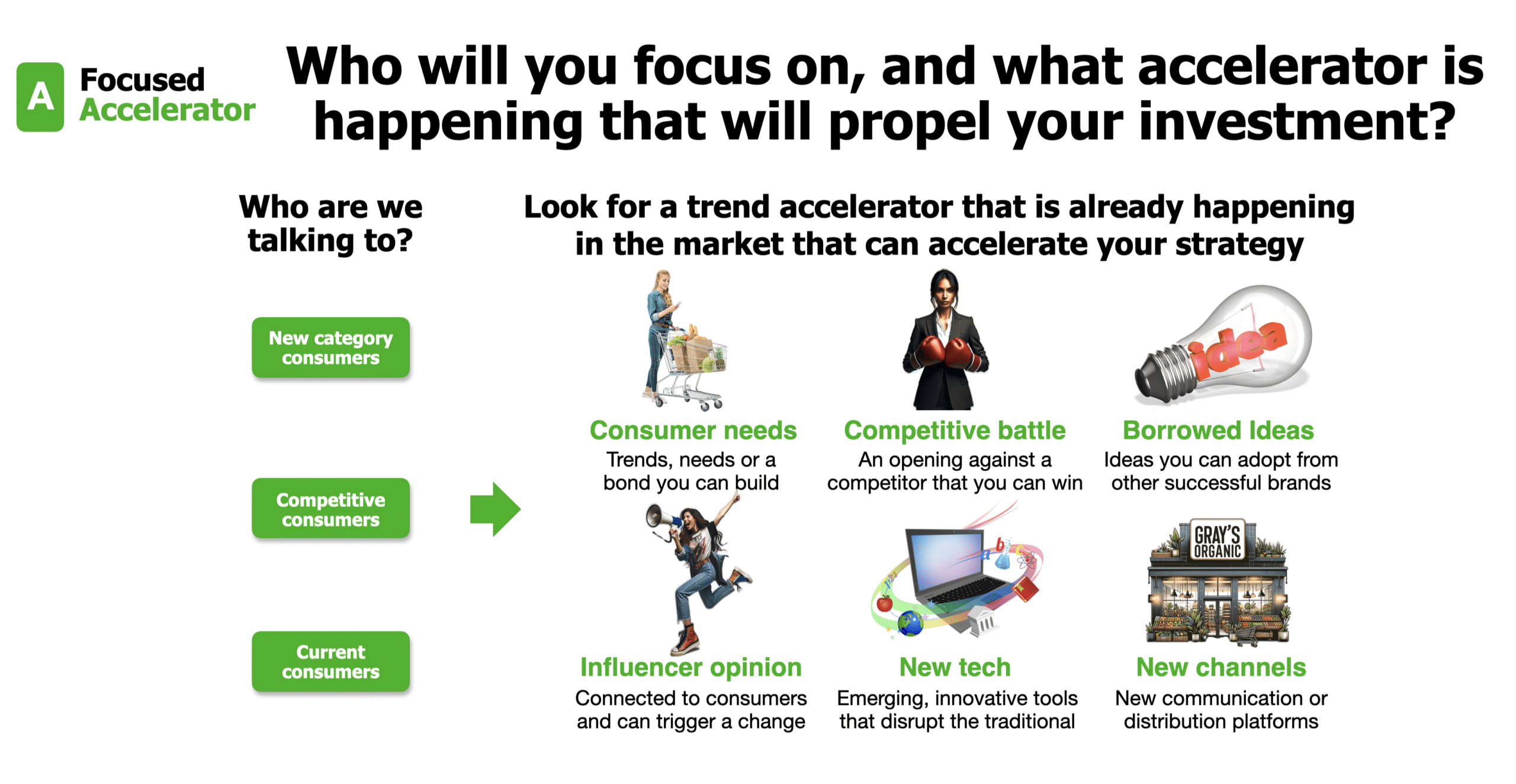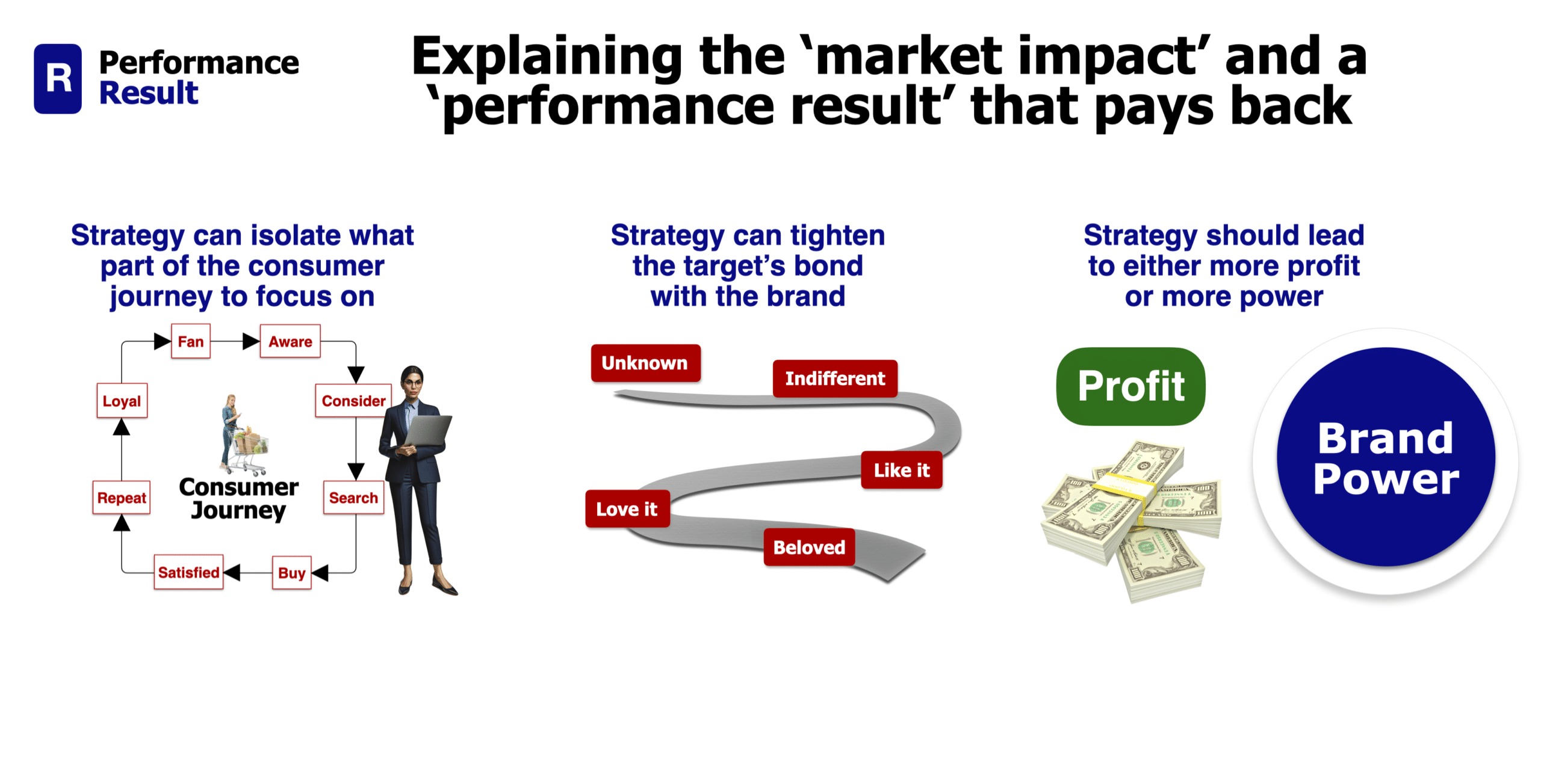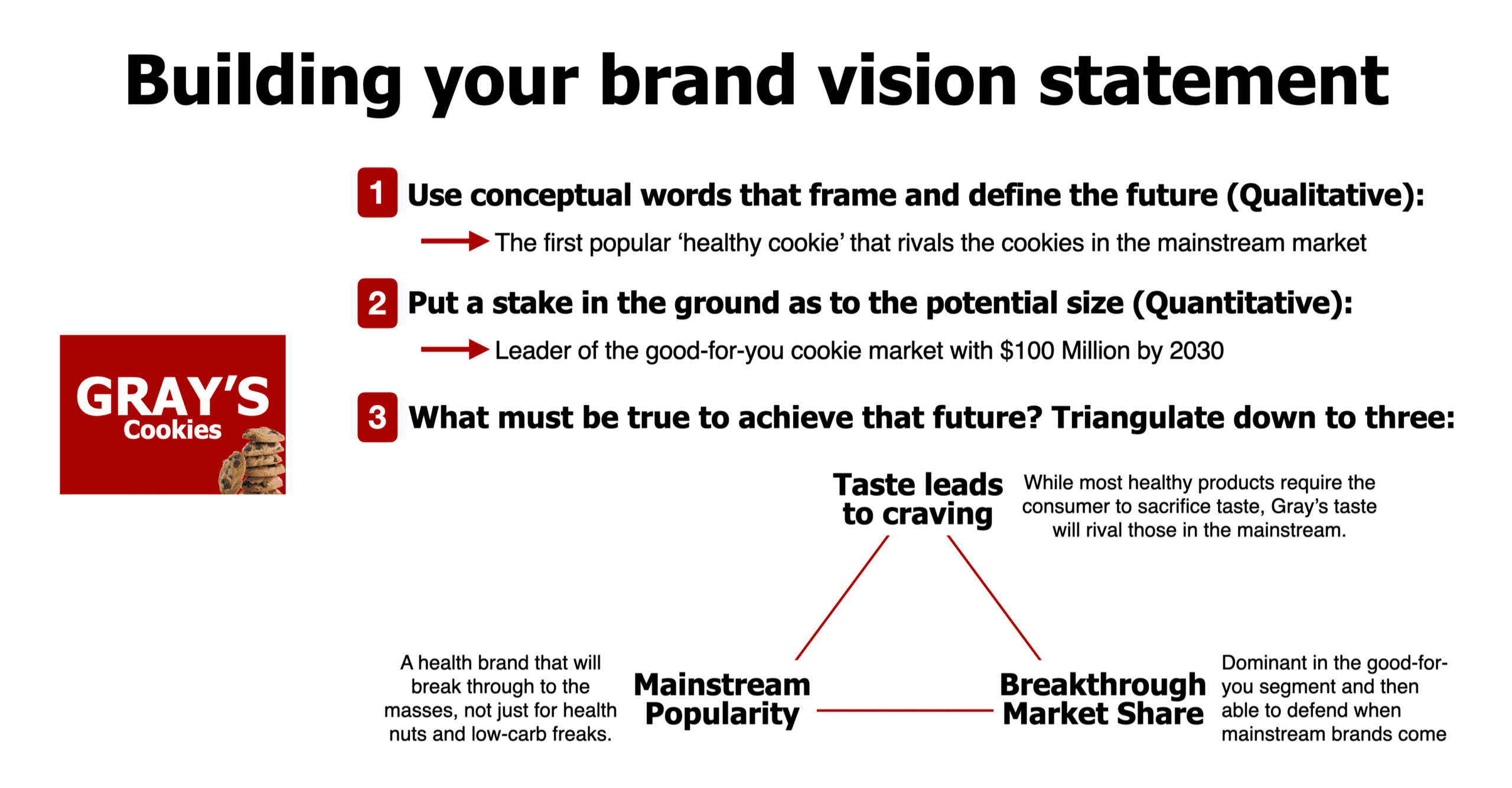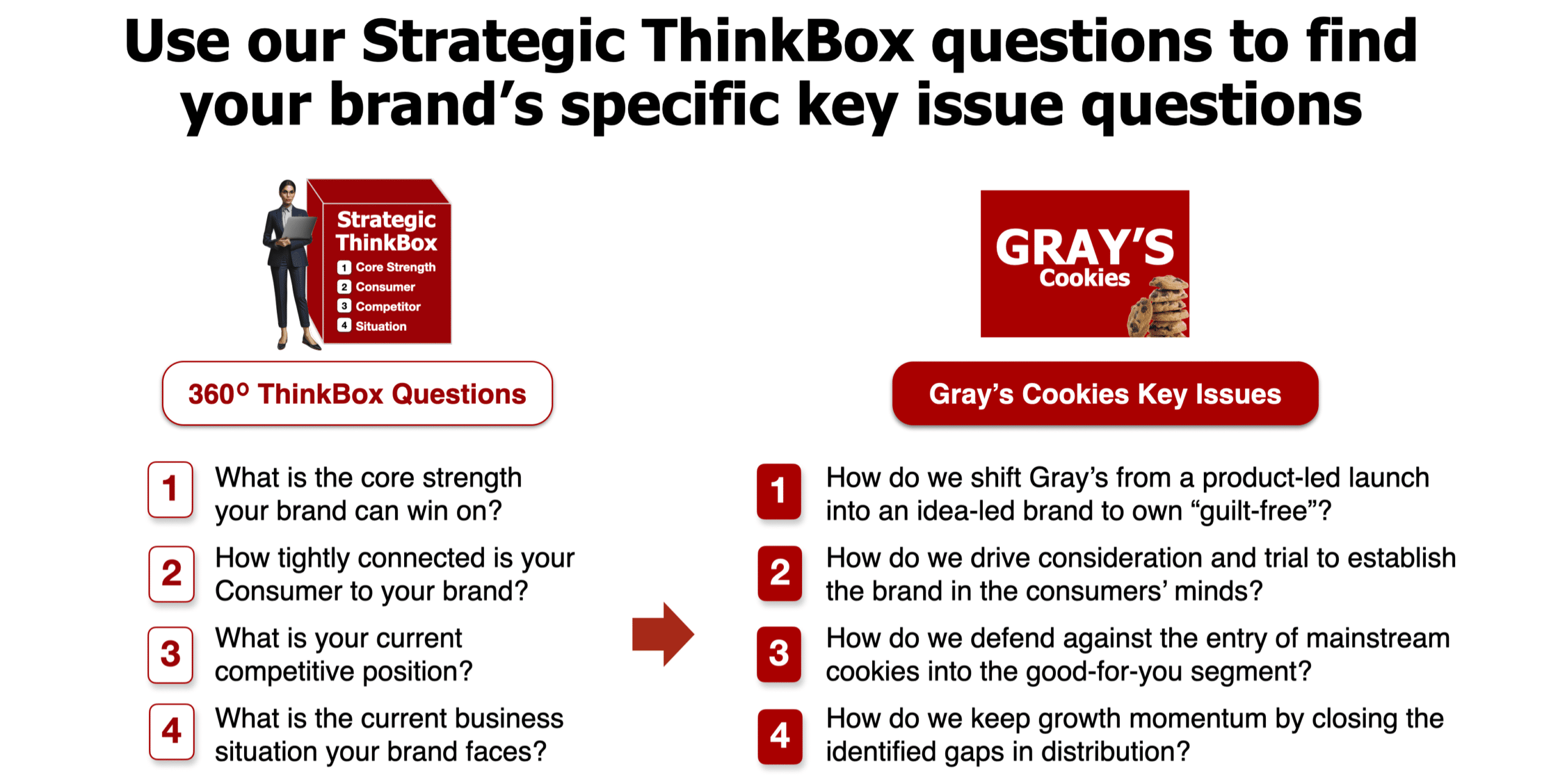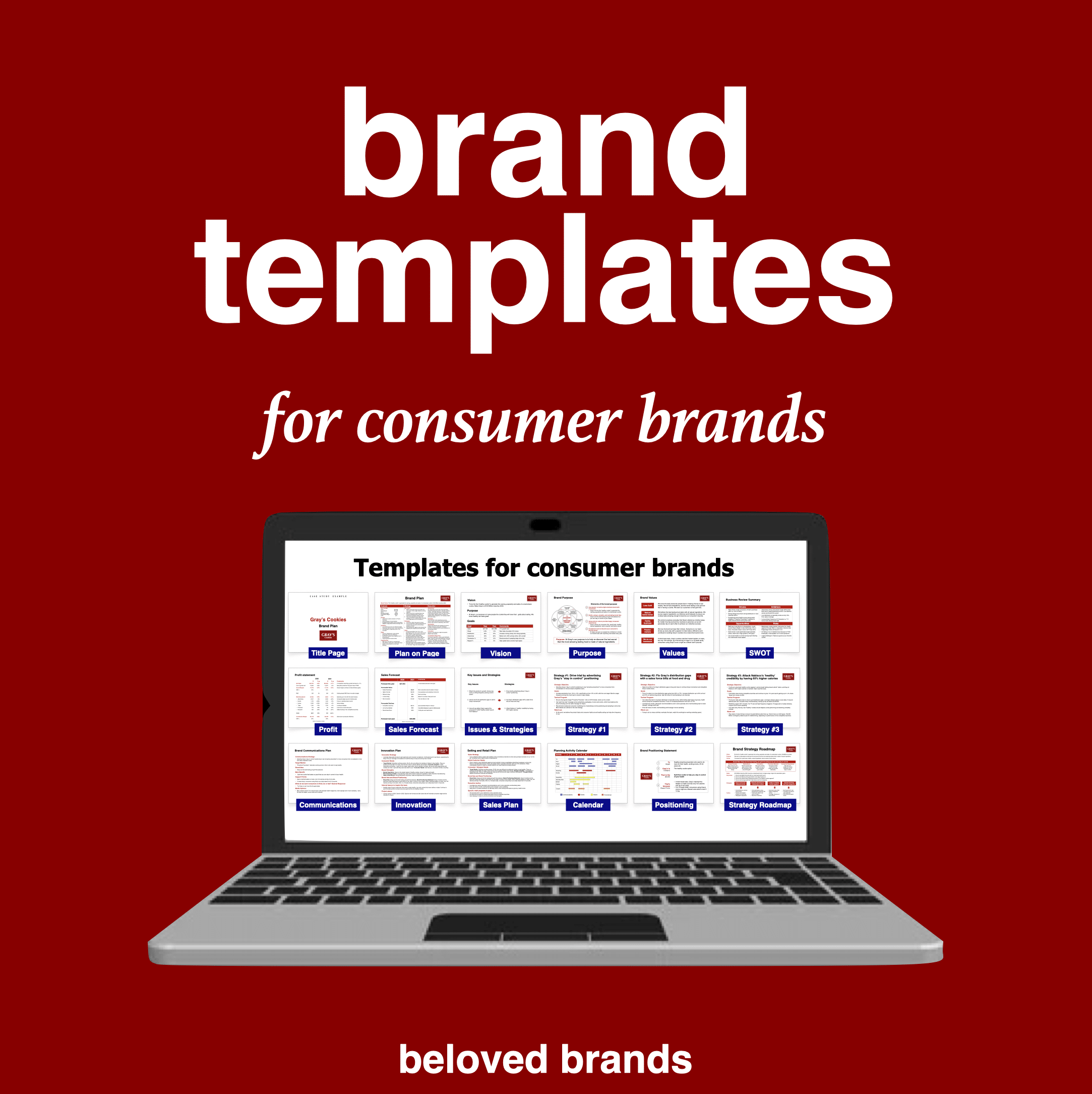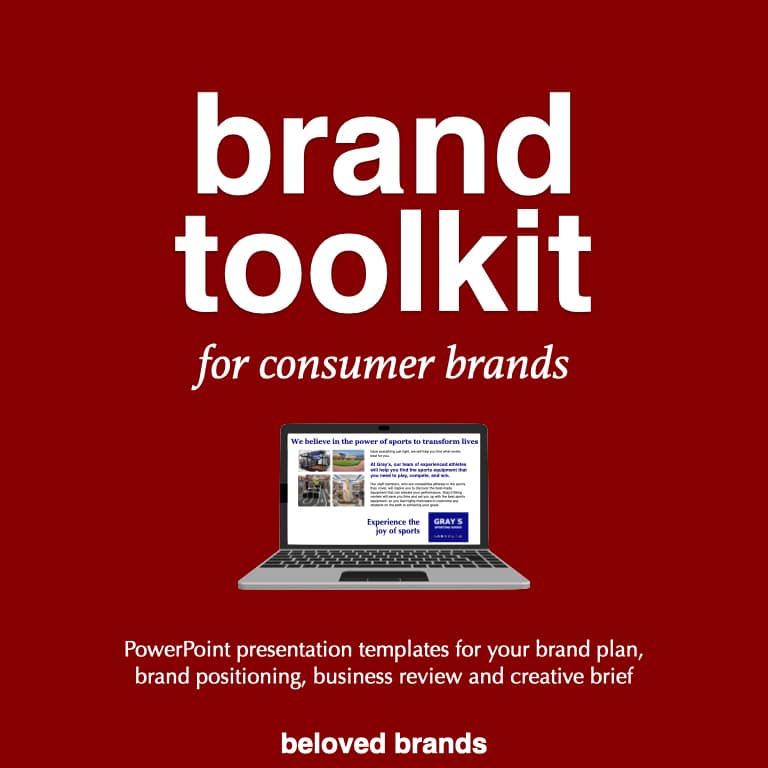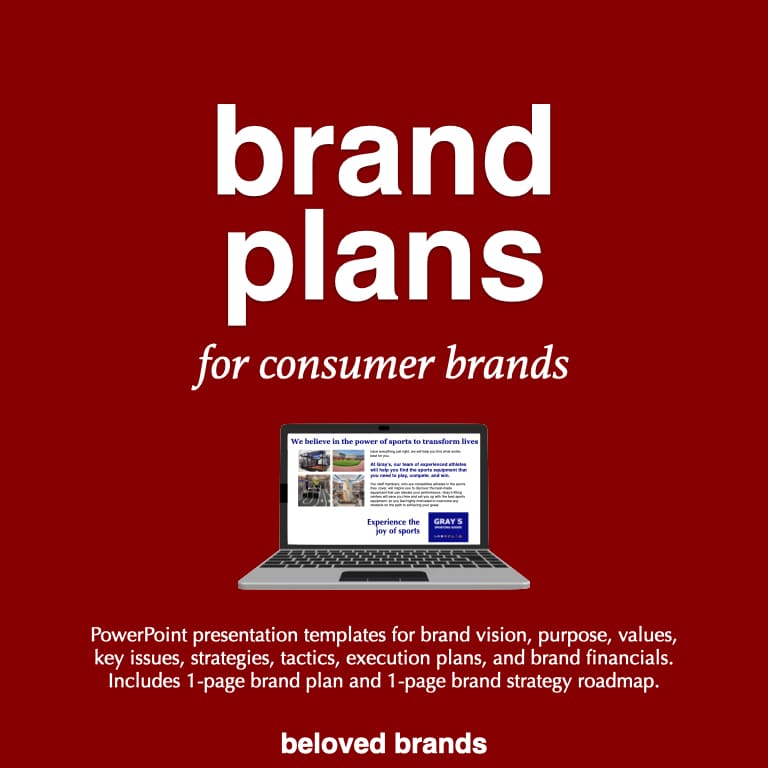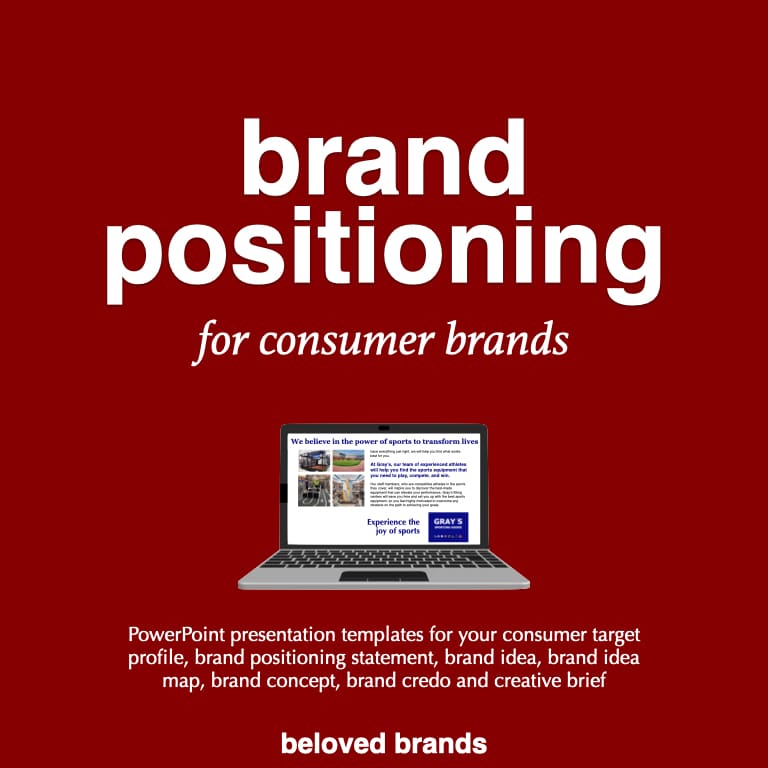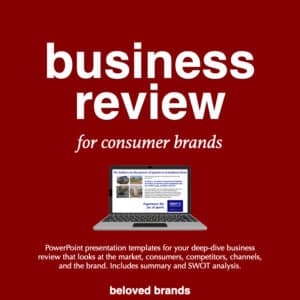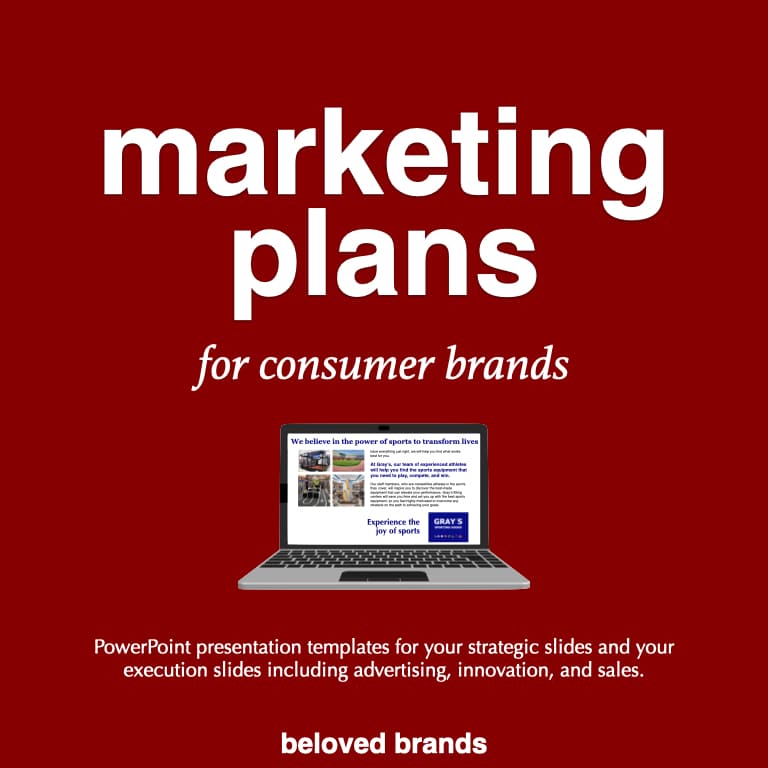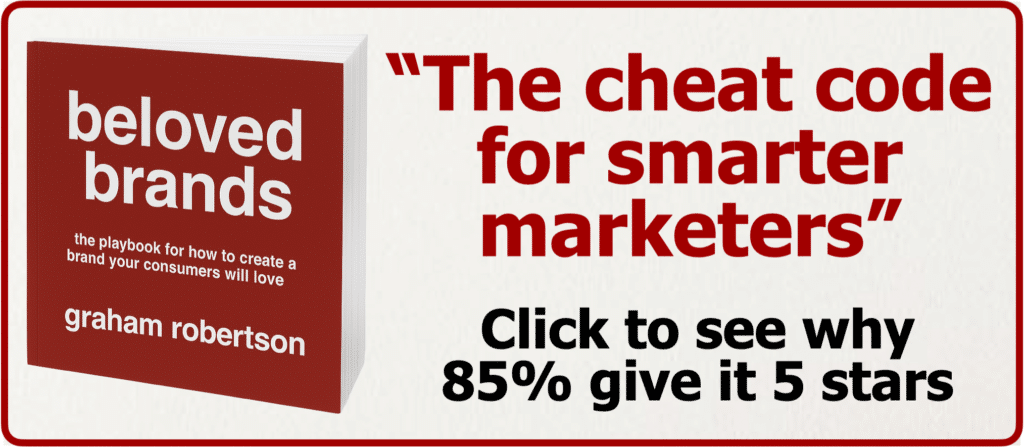The most important element of any plan is the marketing strategy statement. Every plan should start with a vision and key issues defining how to achieve that vision. From there, the marketing strategy answers the key issue question. To start, you must define the programs where you will invest your limited resources. Then, find an identified focused accelerator you can take advantage of. Your strategy must create a performance result that strengthens and wealthier the brand.
In this post, I will show how to structure marketing strategy statements and include examples of the most common ones. We will use examples from some of the most famous brands.
It’s all about choices!
When I was in business school, I had a marketing professor who would say 15 times per class, “It is all about choices. It is all about choices.” Accordingly, your brand strategy statement helps make those choices. Your brand plan is a great tool to make tough decisions. You have to apply your brand’s limited resources of dollars, time, people, and partnerships against unlimited choices. The strategy begins to limit those choices by picking the smartest options to invest in.
Marketing Strategy Statements - Table of Contents
The five elements of smart strategy thinking
Let's start with the five elements that make up smart strategic thinking:
To illustrate, click on the image of the marketing strategic statement to use in your marketing plan.
Vision
First, the best strategy sets a vision of what you want for your brand. The vision sets aspirational stretch goals for the future, linked to a clear result or purpose. Your vision should scare you a little and excite you a lot. And the vision should steer everyone who works on the brand to the final outcome.
Issues
Second, the key issues define what is in the way of the vision.Set up the key issues as questions that defines what is in the way of the vision, using the brand’s core strength, the consumer bond, competitive dynamics, and business situation.
Program Investment
Third, state the strategic program you will invest in. Think through the options of where you could invest to move your brand into a more powerful and profitable position. You can invest to solidify the brand’s core strength. Build a brand idea that tightens the consumer bond. Battle competitors on positioning. And, address the situational challenges and opportunities.
Focused Accelerator
Next, make sure you focus on an identified accelerator. Look for a potential market change, including consumer changes, competitive situations, technology, or sales channels.
Performance Result
Finally, state how the performance result pays back. The shift in positional power in the marketplace moves your brand toward your vision. Most importantly, it creates a future pathway to building a consumer bond, brand power, and brand profitability.
To illustrate, click on the image of the marketing strategic statement to use in your marketing plan.
Beloved Brands playbook
Our Beloved Brands playbook goes in depth on everything you need to build a brand consumers will love. Learn to about strategic thinking, brand positioning, writing brand plans, advertising decisions, media planning, marketing analytics, and financials.

Our readers tell us they keep our Beloved Brands playbook close by for whenever they need to take on a new project. Clearly, we are thrilled that 89% of Amazon reviewers have given Beloved Brands a 5-star rating. Also, we wrote a B2B Brands playbook and a Healthcare Brands playbook.
Organizing your marketing strategy statement
How to turn your strategic thinking into marketing strategy statements
To start, look at how to turn your smart strategic thinking into writing a strategic objective statement. It will help provide specific marching orders to everyone who works on the brand. For example, you can see below the classic way to lay out a brand vision, key issue question and the strategic objective statement.
To illustrate, click on the image of the marketing strategic statement to use in your marketing plan.
Our process covers all five elements of smart strategic thinking. You can see the brand vision, and key issue statement covers the first strategic element. However, you need the strategic objective statement to cover off the remaining four other strategic elements, including the program investment, focused opportunity, market impact, and the performance result. Now, let’s break this down so you can build your own strategy statements.
To illustrate, click on the image of the marketing strategic statement to use in your marketing plan.
Here’s how our marketing strategy statement breaks down:
Marketing Strategy Statement = Programs + Accelerator + Results
One of the biggest flaws with strategy is the failure to cascade strategies down throughout the organization. The people who clap at the town hall meeting walk back to their desks in a state of confusion, wondering how the new strategies on the presentation slides impact their jobs.
For the strategy to take hold, we must structure the communication of our strategies with clear marching orders so everyone knows exactly what they need to do to deliver. As they cascade down, the CMO’s strategies frame their tactics, and those tactics become their managers’ strategic programs. Then, the manager’s tactics become the strategies of the execution specialists.
Structuring your marketing strategy statement
To simplify it, with each strategic program, you will do something that gets the consumer to do something that turns into an explainable result of what you get.

To illustrate, click on the image of the marketing strategic statement to use in your marketing plan.
P: Invest in programs that move towards the vision.
Invest your limited resources—money, people, time, and partnerships—in strategic programs to help close the gap between your current projection and the aspirational vision.
From a brand viewpoint, align your investment to reinforce the brand promise, communicate the brand story, close the deal at the purchase moment, launch new product innovation, or create an ideal consumer experience.
These investments line up to deliver a brand’s consumer touchpoints so that you will tighten the bond with consumers. The investment will result in a more powerful, faster-growing, and profitable brand.
To illustrate, click on the image of the marketing strategic statement to use in your marketing plan.
Brand Promise.
Build brand positioning around your brand’s core strength, whether you lead with the product, story, consumer experience, or price. Combine the ideal functional and emotional benefits to create a brand idea that is unique, simple, ownable, inspiring to employees, and motivating for consumers. Use the brand idea to organize everything you do.
Brand Communications.
Use creative communications to capture attention, link to the brand, communicate the message and stick with consumers. Invest in media to attract, inform, close, service, and delight consumers when they are most open to moving along their purchase journey.
Purchase moment.
Invest in people to inform, close, and service consumers through retail with merchandising, assortment, promotions, and shelf space or content to drive DTC or e-commerce.
Innovation. Invest in continuously exploring new products and services to stay fresh with consumers and differentiate your brand. Inspire ideas, test, and deliver product extensions, improvements, new formats, brand stretching, game-changing technology, and blue ocean exploration.
Consumer Experience.
Alignment of the brand story that creates consumer desire with your employees’ delivery of a consumer experience that exceeds the consumer’s expectation. Operations, sales, and innovation must work together, and each understands their specific role in bringing the brand idea to life.
Consumer Knowledge.
Know your consumers better than your competitors know them. Focus on those who are most motivated by what you offer. Discover the consumers’ moments of accelerated needs, enemies, and insights—leverage data to understand what it takes to move consumers along their purchase journey.
Operations strengths.
Use operations to create a competitive advantage that beats competitors based on speed, flexibility, cost, and simplicity through the production process, ingredients, quality, sourcing, forecasting, supply, shipping, servicing, tracking, financial management, and measurement.
Brand culture.
Use an internal rallying cry that reflects your brand’s purpose, values, and motivations. It must inspire, challenge, and guide your people to provide their greatness on behalf of the brand. It is the quality of your people that drives the success of your brand.
A. Focused Accelerator to propel your strategy
Who are you moving?
Identify who you are talking to and whether you will focus on new category consumers, competitive consumers, or current consumers. Focus on those consumers most motivated by what you offer and use your marketing investment to move them in ways that generate more profit than the original investment. Invest over the long term to build the target over time.
A brand should target new category consumers to reach younger consumers at the entry point of using the category. When you have a superiority over a competitor, you can target their users to steal market share. When a brand wants to drive usage frequency or share of wallet, it should target its users.
Look for a trend accelerator already happening in the market that can accelerate your strategy
Then, look for an accelerator already happening in the market that will help you explain why you think your investment will work harder. Those accelerators could be consumer trends, influencer opinions, competitors, new technology, or new channels. The accelerator provides proof that the investment is worth it.
In terms of an example of how an accelerator works, take the major consumer trend of the shift to work from home. It creates an increased demand for virtual meeting software like Zoom and Teams, home office furniture, ergonomic chairs, and desks designed for small spaces. There has been an increased reliance on delivery services, from groceries to office supplies. And Real Estate agents now promote ‘space for a home office.’
To illustrate, click on the image of the marketing strategic statement to use in your marketing plan.
When you focus, five amazing things happen to your brand:
Stronger return on investment (ROI):
- When you focus your dollars on a distinct breakthrough point with an ideal target, message, and media, you will see the most positive and efficient response in the market.
Better return on effort (ROE):
- Make the most efficient use of your people by focusing on ideas with the most significant impact and the easiest to execute. Avoid ideas that are small and difficult. Having the data for ROI can be difficult to find, but your instincts help you to figure out your return on effort (ROE).
Stronger reputation:
- When you limit your audience and brand message, you will have a better chance to own that reputation among that core target audience.
More competitive:
- As you grow, your brand will start to create a space in the market, and you can use your core base of brand fans to defend against others entering your space.
More investment behind the brand:
- When you show up as an investment manager who delivers profitable business results, your CFO will provide more money to keep doing what you are doing.
R. Breakthrough market impact that leads to a performance result
A smart strategy advances consumers along their journeys, strengthens consumer bonds, builds more power, and drives profit. A breakthrough market impact involves advancing consumers along their purchase journeys, moving them from awareness to consideration to purchase by using the right trigger at each stage. And then onto repeat, loyalty, routines, and becoming a brand fan who influences others.

To illustrate, click on the image of the marketing strategic statement to use in your marketing plan.
How to turn marketing strategy into results
Great marketing strategy results in a shift in positional power in the marketplace, moving your brand toward your vision. Brand power is stored energy that can be used for future profits. As we showed in the previous chapter, a brand can become powerful compared to the consumers it serves, competitors it battles, channels it sells into, suppliers who make the products, influencers in the market, and employees who work for the brand.
The ultimate goal of any marketing strategy is to drive profit through premium pricing, trading consumers up on price, finding a lower cost of goods, using lower sales and marketing costs, stealing competitive users, getting loyal users to use more, entering new markets, or finding new uses for the brand. As an investment manager, when you provide a profit greater than the investment, the CFO will tap on your door with more money and say, “Do it again.” And that’s why I use a flywheel to show our brand strategy.
To illustrate, click on the image of the marketing strategic statement to use in your marketing plan.
Writing the marketing strategy statement to use in your marketing plan
The marketing strategy statements in the marketing plan answer, “How can we get there?” Each strategy must provide a clear, definitive answer to your key issues. When I was in business school, I had a marketing professor who would say 15 times per class, “It is all about choices.”
The marketing plan is a great tool for forcing tough decisions as you compare your brand’s limited resources of dollars, time, people, and partnerships to unlimited choices. However, the increasing number of options can make it easy to get distracted.
Brand leaders must rely on the marketing plan process to guide their choices, selecting only those that propel your brand along the pathway toward your stated brand vision. Choose the strategic options that provide the highest return on effort (ROE) or return on investment (ROI).
Vision: Visualize a better future and imagine what must be true:
To illustrate, click on the image of the marketing strategic statement to use in your marketing plan.
Use conceptual words to frame and define the future, which becomes the qualitative part of the vision. For Gray’s Cookies, the first part of the vision is to be “the first popular healthy cookie that rivals the cookies in the mainstream market.”
Next, put a stake in the ground as to the potential size, which becomes the quantitative part of the vision. For Gray’s, the second part of the vision is to be “the leader of the good-for-you cookie market with $100 Million by 2030.”
The third element of the vision is a triangulation of what must be true to achieve that future. For Gray’s Cookies, the three elements that must be true are
- Taste leads to craving.
- Mainstream Popularity.
- BreakthroughMarket Share.
Using our technique, the ideal vision statement for Gray’s Cookies should be:
To be the first ‘healthy cookie’ to reach $100 Million by 2030 by generating the craving, popularity, and market share of a mainstream cookie.
Let's build the key issues for Gray's Cookies
1. What is your brand’s core strength?
Gray’s Cookies started as a product-led brand, but it met a ceiling on growth. The market is cluttered. There are signs the product has been fully accepted, but the brand idea has yet to connect. Gray’s cannot gain enough share if perceived as the next best product. The open space is an idea that combines the physical and psychological elements of diets—focusing the brand story on helping get past the guilt of cravings. How do we communicate our story so we own it? In conclusion, Gray’s wants to move their core strength from product to brand story—to build on the “guilt-free” idea. As we frame this issue into a question, it becomes:
How do we shift Gray’s from a product-led launch into an idea-led brand to own “guilt-free?”
2. How tight is the bond with consumers?
Like many new brands, Gray’s Cookies has some consumers who love them already, but with the vast majority of the market, Gray’s is rather unknown. Even with those who love, stated loyalty is high, but usage frequency is far below the mainstream cookies. Do we focus our investments on getting more new consumers, or do we get our current fans to use more? How do we use our brand fans to create more awareness? In conclusion, Gray’s has a very small base of consumers who love them. Still, they need to figure out how to cultivate the love of happy consumers and reputation to influence other consumers, who currently see the brand as relatively unknown. Turning that into a key issue question, it becomes:
How do we drive consideration and trial to establish the brand in the consumers’ minds?
3. What is your competitive situation?
Gray’s has quickly disrupted the cookie category, capturing the consumer shift to healthier alternatives. Gray’s has become the dominant power player brand in the ‘good-for-you’ cookie segment. However, there are rumors that the mainstream (Nabisco, Pepperidge Farms) cookies are looking to enter with healthier alternatives. How do we hang onto our share? Do we attack or defend? What will be the source of the defense plan? In conclusion, Gray’s recipe has helped disrupt the cookie category. Consumers have been highly responsive, and Gray’s has stolen a significant share. Now, the concern is the reaction of the big power player mainstream brands. Turning that conclusion into a key issue question, it becomes:
How do we defend against the entry of mainstream cookies into the good-for-you segment?
4. What is your business situation?
Gray’s must maintain momentum as it continues to grow. Early on, now is the time to start filling in some gaps. As we invest in advertising, we must expand our distribution, especially at non-food retailers such as Costco, Walmart, and drug stores. We need to do that before the competitors come in, or we will never be able to get that distribution. The business situation for Gray’s is to maintain momentum, with an opportunity to fill in distribution and go after mass and drug channels. Turning this into a key issue question, it becomes:
How do we keep growth momentum by closing the identified gaps in distribution?
To illustrate, click on the image of the marketing strategic statement to use in your marketing plan.
Writing Marketing Strategy Statements = Programs + Accelerator + Results
As a reminder, you should start by writing your strategic objective statement using the three elements of the P + A + R model:
Build programs to deliver the vision:
The investment in programs to deliver the strategy whether you are building the brand promise, brand story, purchase moment, product innovation, and consumer experience. These crystal-clear marching orders to the team leave no room for doubt, confusion, or hesitation. In this Gray’s Cookies example, the strategic capability is to “Communicate Gray’s new ‘Guilt Free’ positioning.”
Focused Accelerator:
A trend accelerator already happening in the market that can accelerate your strategy. In this Gray’s Cookies example, the focused accelerator is “to a growing proactive preventer target who live a low-carb keto life.”
Performance result:
Drive a specific performance result linked to the market impact, making the brand more powerful or profitable. In this example, the result is “to attract and tempt them to try Gray’s and drive higher market share.”
To illustrate, click on the image of the marketing strategic statement to use in your marketing plan.
Using our cheatsheet above for marketing strategy statements, start investing in programs and choosing the target and focused accelerator that proves the strategy is a good investment. For the performance result that answers what will you do, what will consumers do, and what do we get? The cheatsheet focuses your communication by choosing one option for each element.
Structuring your marketing strategy statement
- Key Issue: How do we build an innovation pipeline to drive usage frequency?
- Marketing Strategy Statement: Build a product pipeline (P) that meets our loyal consumers’ changing flavors and format needs (A) to delight and tighten their bond with Gray’s to drive usage frequency and share. (R)
Our P + A + R marketing strategy statements can run your brand
With these chunky marketing strategy statements, you can decide on your team’s budget and structure based on your needed skills and select the right execution partner. The strategy helps determine how to build on your core strength, bond with consumers, or win competitive battles.
You will have the desired response on your creative brief, you can align with your sales team, and you will know how to judge the work you see. It will help you set your sales forecast, impact your profit margins and set your market share goals.
While it takes much work to get to this marketing strategy statement, it will pay off for you. This marketing strategy statement will show up on each strategy page of your marketing plan. It will be at the top of your creative brief and should be what you use to see if your execution delivers on the strategy.

To illustrate, click on the image of the marketing strategic statement to use in your marketing plan.
Build your marketing strategy page for your marketing plan
Your effort in writing these clunky statements will not go to waste. Once you have decided on your top three marketing strategy statements, you can lay out a specific slide to explain each strategy within your marketing plan presentation.
- First, include the clunky strategic objective statement. (I told you it would not go to waste.)
- Secondly, use the goals to measure the ideal result of this strategy.
- Then, list three tactical programs, where you will invest your resources.
- Finally, insert a “watch out statement” to address issues that could derail my presentation.
Our brand toolkit for consumer brands is our most comprehensive template helps you communicate your brand plans, brand positioning, business review and creative briefs.
Our brand plan template offers slides for vision, purpose, analysis, key issues, strategies, and execution plans, ensuring a thorough approach to your brand’s development. The brand positioning template guides you through defining your target profile, crafting a brand positioning statement, and developing a unique brand idea, concept, values, story, credo, and creative brief. Finally, our business review template provides slides for in-depth analysis of the marketplace, customers, competitors, channels, and your brand.
Choose the right template for your business needs
Marketing Plans for consumer brands
Combining strategic slides for insightful planning and marketing execution slides for seamless implementation, our templates are designed to propel your brand towards success and help you make a lasting impact in the market.
